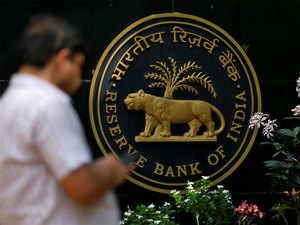MUMBAI: The Reserve Bank of India (RBI) will take a relook at its supervision structure for banks, finance companies and other entities regulated by the central bank.
It will initiate a discussion with its board of directors on a proposal to overhaul the crucial job of supervision so that the regulator is better equipped in picking up early warning signs.
This may involve consolidating the different supervisory activities under a separate division or head, creating a pool of officials for better analysis of the continuous flow of data from banks and finance companies, and involving specialists.
“The aim to minimise disruptions in the financial system,” said an RBI official. A note prepared by RBI is expected to be placed before the directors at the central bank board meeting in Chennai on Tuesday.
“These are early days. We don’t know the view of the board members... in many advanced countries supervision is carried out by a specialised wing or entity,” said the person.
The failure of large non-banking finance companies, shortcomings of credit rating agencies, divergence in asset quality of some of the high-street banks, and alleged lapses on the part of auditors are some of the factors that could have contributed in shaping the proposal.
“There is need for closer monitoring so that flaws in an institution do not surface only after the March 31 numbers, by when the year is lost. While the supervision framework has been fine-tuned over the years, the financial system has become complex and continues to throw up new challenges,” the person told ET.
RBI had earlier advertised for hiring supervisory resources which could include bankers and accountants.
The Indian central bank currently follows a risk-based supervision model in understanding the risk areas in banks which are required to submit a risk-assessment report and a divergence table. These quantitative elements, along with liquidity and vulnerabilities in areas like the IT system, go in the preparation of a risk mitigation plan to be executed within a timeline set in discussion with the bank. The qualitative aspects looked at the regulator include performance of the board and senior management as well as governance standards. Banks have to share information with the regulator in three tranches: data on more than 600 parameters which are used by the regulator to arrive at a risk-assessment score; information on qualitative controls, and compliance and audit.
The financial numbers shared by banks every month or quarter to RBI’s department of supervision are part of the offsite monitoring and surveillance (OSMOS) mechanism. For on-site inspection, RBI focuses on the CAMELS supervision model that looks at parameters such as capital adequacy, asset quality, management, earning, liquidity and system and control.
“Beyond the traditional supervision tools of a central bank, regulatory officials today need deeper understanding of audit and corporate finance. Besides, data should be analysed on an ongoing basis so that the report referred to the enforcement cell for possible action is strong enough,” said the compliance official of a private bank.
Under the governorship of Urjit Patel, RBI had set up an internal enforcement department to oversee regulatory compliance and violations by banks, non-bank finance companies and other entities.
“After the Supreme Court order, there would be natural demand to sharpen the focus on supervision and supervisory report,” said a senior banker. In April, the apex court directed RBI to disclose information pertaining to its annual inspection report of banks under the Right to Information Act, unless they are exempted under law.
ET’s email to an RBI spokesperson went unanswered till the time of going to press.
Published On : 21-05-2019
Source : Economic Times

